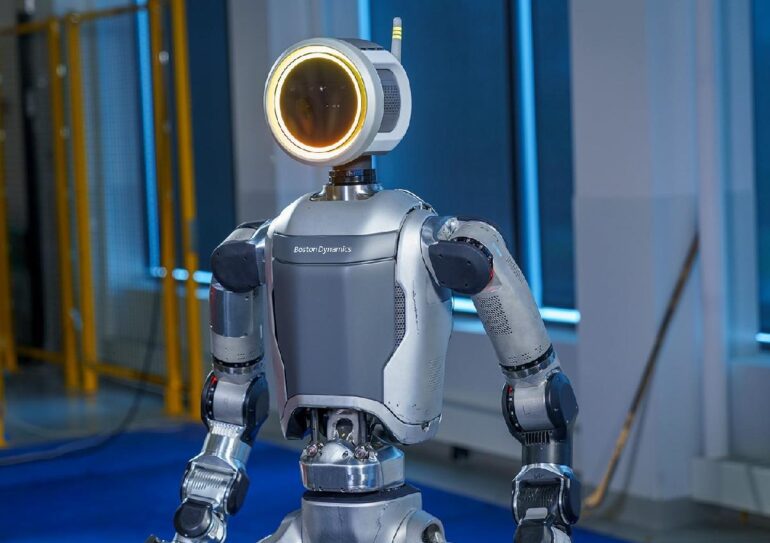- Hyundai’s ‘Atlas’ humanoid challenges Tesla’s ‘Optimus’ with electric propulsion.
- Boston Dynamics ‘Atlas’ emphasizes mass production capability and AI integration.
- Scheduled early testing at Hyundai’s factory signifies a shift towards industrial application.
- Competition intensifies in the mass production of next-gen humanoids.
- ‘Atlas’ and other models aim to integrate machine learning and LLM functionalities.
Main AI News:
A year post-Tesla’s ‘Optimus’ unveiling, Hyundai Motor Group enters the fray with their latest ‘Atlas.’ With testing slated to commence at their factory early next year, it’s poised to challenge prevailing technology in mass production, potentially integrating LLMs.
In the wake of Tesla’s unveiling of the ‘Optimus’ humanoid robot last year, Hyundai Motor Group’s subsidiary, Boston Dynamics, has unveiled their latest creation, the ‘Atlas.’ This humanoid utilizes an electric propulsion system, signaling a shift in the competitive landscape of mobility companies vying for mass production. Unlike its predecessors, the ‘Atlas’ is designed with actual mass production capabilities in mind, coupled with AI and LLM integration, setting a new benchmark in the industry.
Boston Dynamics unveiled the ‘Atlas’ on their U.S. website on the 18th, showcasing its electrically-driven design as a replacement for the previous hydraulically-powered model. According to Boston Dynamics, the ‘Atlas’ offers enhanced versatility compared to its predecessor, with the ability to incorporate custom actions tailored to user requirements.
One of the most significant aspects of the ‘Atlas’ is its planned integration into Hyundai’s automotive manufacturing process, which is scheduled for early testing next year. This move signifies a departure from humanoid development, which is merely symbolic of a tangible step towards mass production and industrial deployment, marking a paradigm shift in the industry.
Boston Dynamics CEO Robert Plater emphasized the focus on mass production during an interview with U.S. media on the 17th, stating that the ‘Atlas’ was developed with the intention of widespread application in industries and logistics. Hyundai’s forthcoming next-generation automation facility is slated to serve as the testing ground for the ‘Atlas,’ showcasing its capabilities in real-world settings.
In the realm of mass production, competition is fierce, with companies like Tesla also gearing up to launch their next-generation humanoid, ‘Optimus,’ with plans for mass production by 2025. Similarly, U.S. humanoid developer Figure AI has partnered with BMW to deploy humanoid robots equipped with advanced AI and LLM functionalities in their manufacturing plants, signaling the growing trend towards automation in the automotive industry.
An intriguing aspect of the ‘Atlas’ is its incorporation of machine learning-based AI software, positioning it at the forefront of humanoid technology. Industry experts view the integration of AI into humanoids as the ultimate endpoint in AI development, enabling human-like behavior and interactions.
As ‘Figure 01’ from Figure AI, backed by investments from OpenAI, approaches mass production, it is expected to feature advanced AI and LLM capabilities, allowing seamless communication with humans. Similarly, Hyundai Motor Group’s subsidiary, 42dot, is developing its own LLM, paving the way for future mass-produced models equipped with this cutting-edge technology.
Conclusion:
The unveiling of Hyundai’s ‘Atlas’ humanoid, coupled with its planned integration into automotive manufacturing processes, marks a significant shift in the mobility market. With a focus on mass production and advanced AI integration, Hyundai is poised to challenge established players like Tesla, signaling a new era of automation and innovation in the industry. This move underscores the increasing importance of humanoids in industrial applications, setting the stage for fierce competition and transformative advancements in mobility manufacturing.

